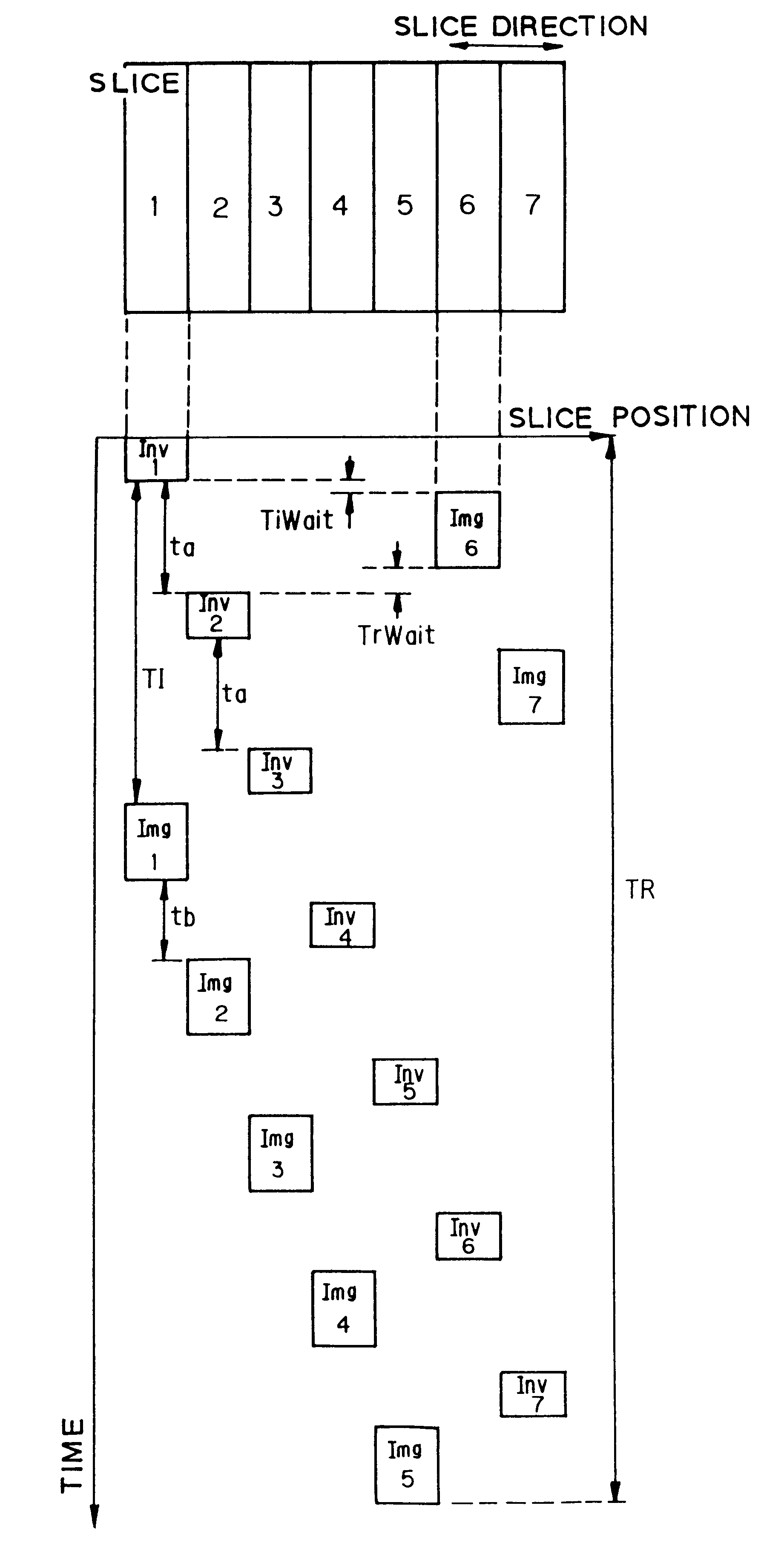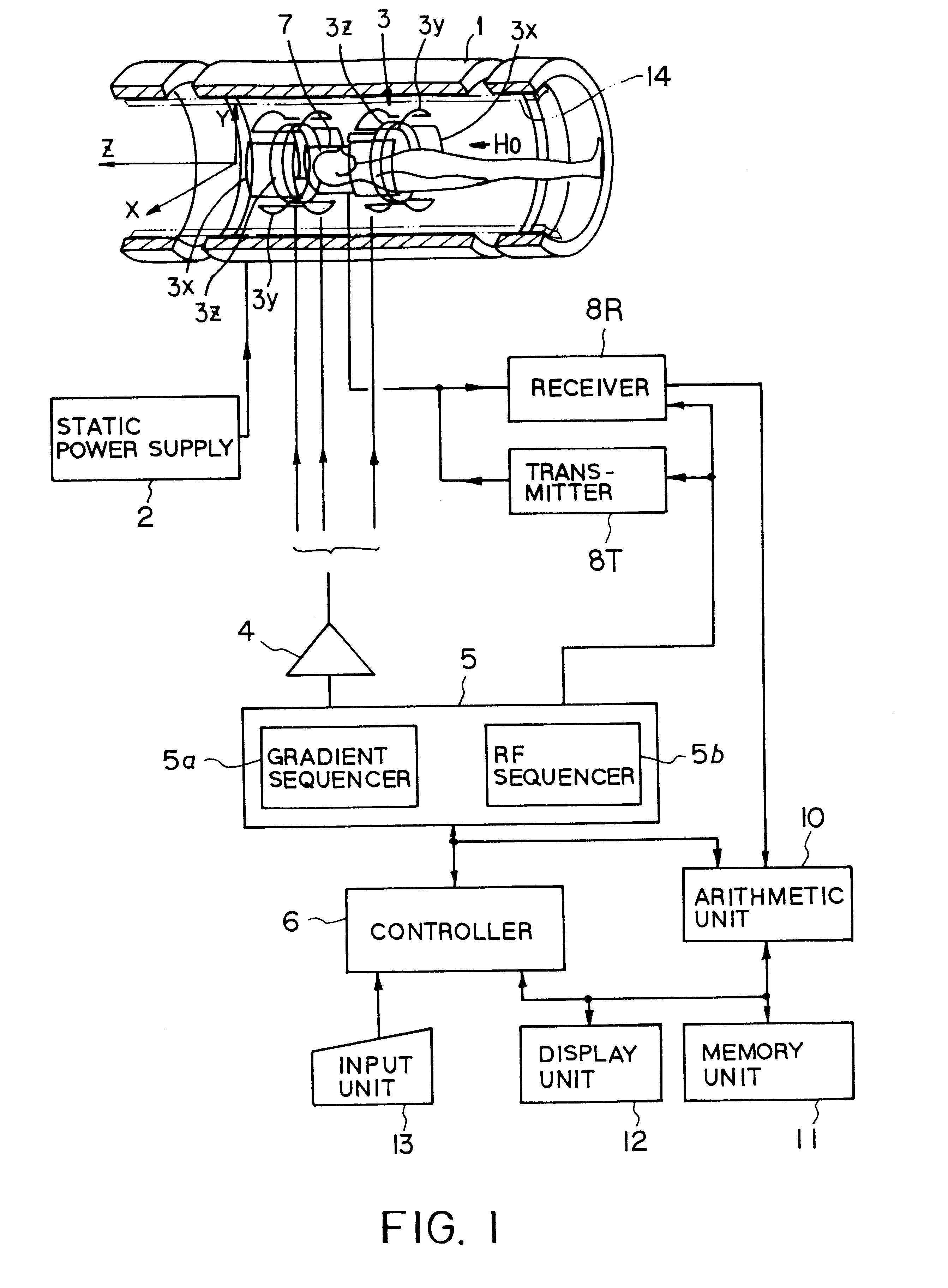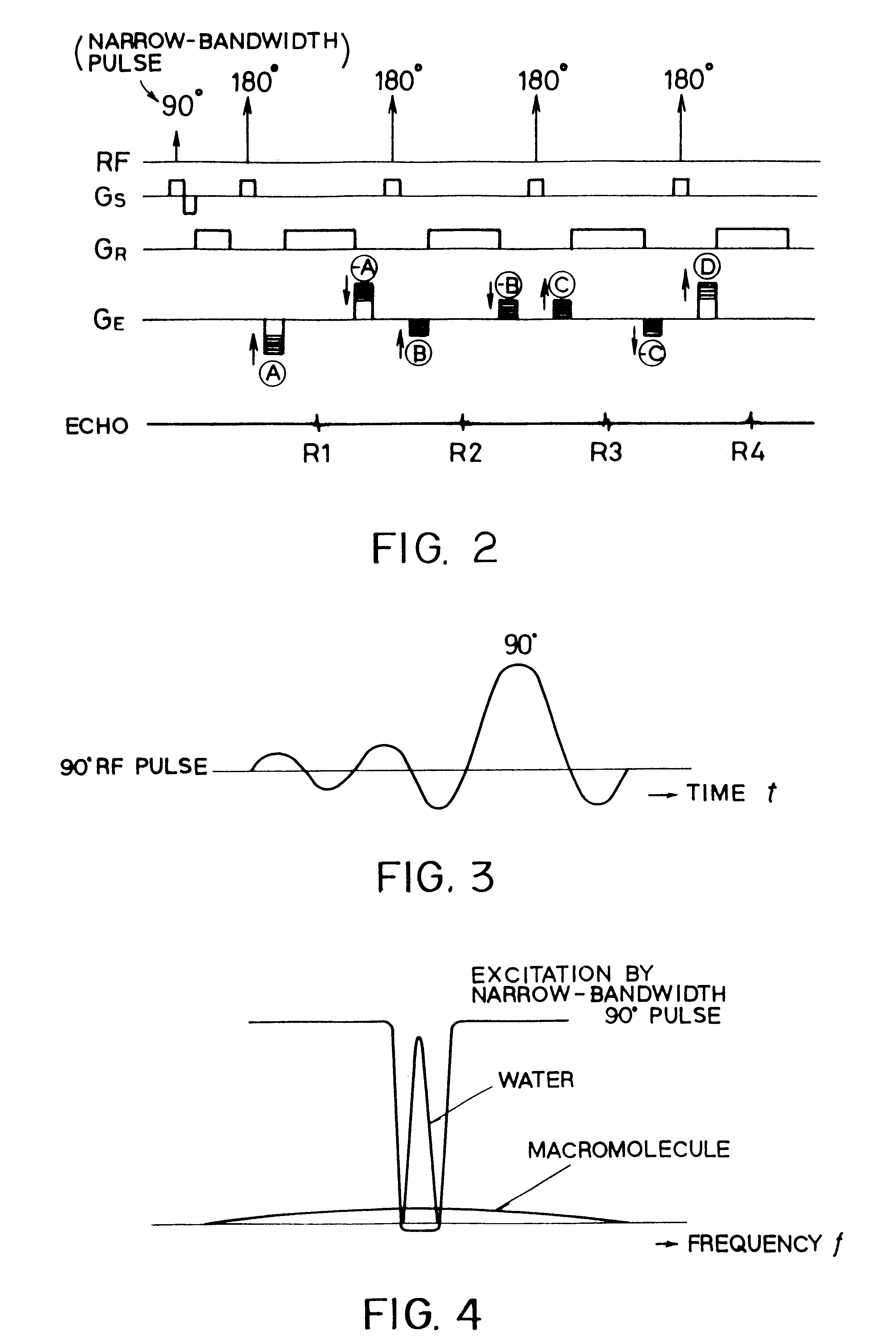MR imaging using nested pulse sequence involving IR pulse
- Summary
- Abstract
- Description
- Claims
- Application Information
AI Technical Summary
Benefits of technology
Problems solved by technology
Method used
Image
Examples
first embodiment
the present invention will be described with reference to FIGS. 1 to 7.
FIG. 1 shows an outline configuration of a magnetic resonance imaging system in accordance with this embodiment. This magnetic resonance imaging system comprises a magnet unit for generating a static magnetic field, a magnetic field gradient unit for appending position information to a static magnetic field, a transmitting and receiving unit for receiving an MR signal, and a control and arithmetic unit responsible for system control and image reconstruction.
The magnet unit comprises a superconducting magnet 1 and a static power supply 2 for supplying a current to the magnet 1, and generates a static magnetic field H0 in a Z-axis direction in a cylindrical aperture into which a patient P is inserted. The magnet unit is provided with shim coils 14 for primary shimming. By regulating a current to be supplied to the shim coils 14, shimming is achieved.
The magnetic field gradient unit includes three pairs of gradient ...
second embodiment
the present invention will be described with reference to FIGS. 11 to 31.
The schematic configuration of a magnetic resonance imaging system in accordance with this embodiment is a magnetic resonance imaging system comprising the same components as those in the first embodiment (refer to FIG. 1). The gradient sequencer 5a has a computer and receives a signal commanding an acquisition pulse sequence employed in fast FLAIR or the like from a controller 6 (having a computer) for controlling the whole system. The controller 6 executes scan planning as described in FIG. 26 through interaction via the input unit 13.
Several features concerning imaging adopted by this embodiment will be described.(1) Usable pulse sequence
A pulse sequence usable for the magnetic resonance imaging system of the second embodiment is an IR (inversion-recovery) pulse sequence including an inversion pulse.
To be more specific, a pulse sequence that is a combination of an inversion pulse (frequently, referred to as ...
PUM
 Login to View More
Login to View More Abstract
Description
Claims
Application Information
 Login to View More
Login to View More - R&D
- Intellectual Property
- Life Sciences
- Materials
- Tech Scout
- Unparalleled Data Quality
- Higher Quality Content
- 60% Fewer Hallucinations
Browse by: Latest US Patents, China's latest patents, Technical Efficacy Thesaurus, Application Domain, Technology Topic, Popular Technical Reports.
© 2025 PatSnap. All rights reserved.Legal|Privacy policy|Modern Slavery Act Transparency Statement|Sitemap|About US| Contact US: help@patsnap.com



